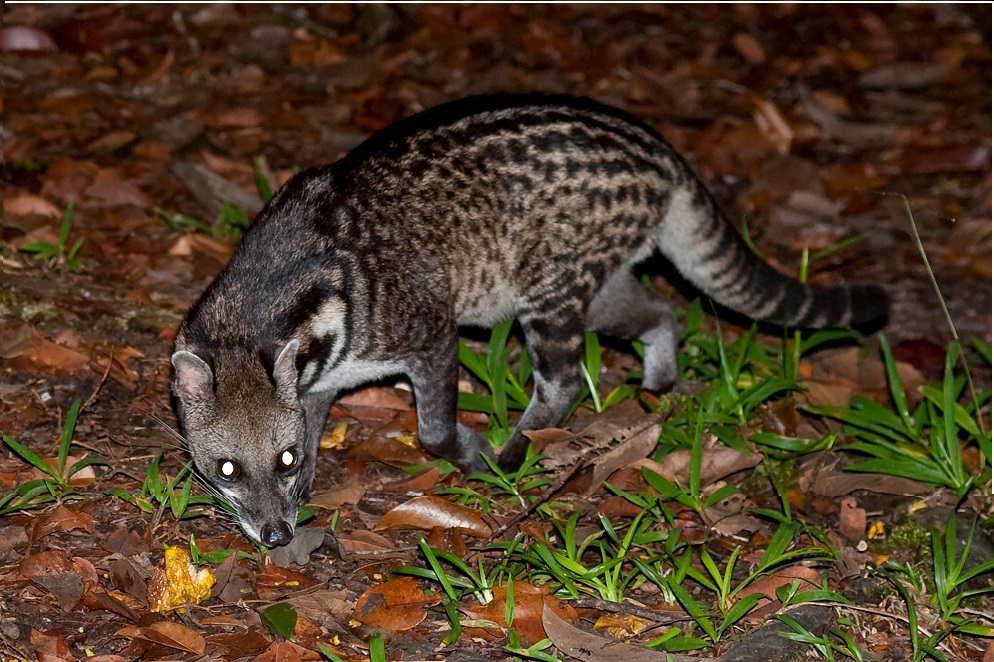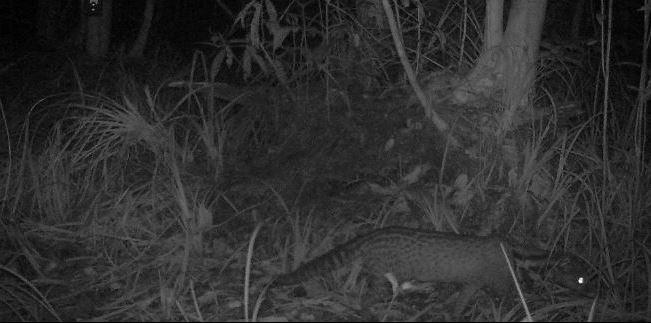September 22, 2023
Maybe you’ve heard of Kopi Luwak – the world’s most expensive brand of coffee beans and one of Indonesia’s most famous exports. You may also be aware that this unique coffee is produced – quite literally – by an animal: the civet cat. Yet, the story behind the beans, and their animal producer, is more intricate than the coffee itself.
There are five civet cats in Restorasi Ekosistem Riau (RER): The Malayan civet (Musang Tenggalung) and the common palm civet (Luwak or Musang Luwak) are two of them. But what sets them apart? How can you tell the difference between them? What role do they play in the ecosystem and what is being done to protect them? In this article, we’ll delve into the mysterious realm of two of Asia’s most captivating creatures to uncover their secrets
1. Taxonomy
Here comes the science. RER is home to two members of the civet cat tribe. They are the Malayan civet (Viverra tangalunga), or ‘Musang Tenggalung’; and the common palm civet (Paradoxurus hermaphroditus), or ‘Luwak’. The name ‘civet cat’ is actually a misnomer; although they both look a bit like cats, they’re actually members of the Viverridae family, which include binturong also known as the bearcat.
2. Physical appearance
The luwak is quite small, weighing in at around 3.5 to 4.5 kg. It has dark legs and a greyish coat, with black spots all along its body. Its long tail is black on top, with rings on the underside. The musang has a long, stocky body covered with coarse and shaggy grey hair. It has a white mask across the forehead, a small white patch under each eye, a white spot either side of the nostrils, and a narrow dark line between the eyes. Its tail is equal to, if not longer than, its body. It weighs between 2 to 5 kg.

3. Diet and behavior
Both The Malayan civet (Musang) and common palm civet (Luwak) are nocturnal, so it tends to do most of its hunting and foraging at night. It’s also an omnivore, which means it eats meat, vegetation, and all kinds of other foods. This includes fruits, roots, eggs, invertebrates, and small animals like insects, frogs, rodents, lizards and snakes.

Both the musang and luwak share a feature: a scent gland beneath their tail. When threatened, the luwak releases a foul odor for defense, reminiscent of a skunk. On the other hand, the musang’s gland emits a potent ‘pandan’ aroma.
The musang also feeds on palm flower sap; when fermented, this is made into palm wine (or ‘toddy’). Because of this behavior, the musang is sometimes referred to as the ‘toddy cat’.
4. Ecosystem role
Considering their diverse and varied diet, both species play a major role in ecosystem health. They help to maintain diversity in tropical forest ecosystems by dispersing seeds in their droppings.
For the Luwak, an unexpected consequence of this process has been the boom in coffee cherries it leaves behind on its travels through plantations and forests. A particular enzyme in their digestive tract is thought to reduce the caffeine content in the semi-digested cherries and give them a rich and distinctive flavor. This makes their droppings one of the most valuable commodities in the world.
5. Threats and protection
The musang and luwak are just two of the 76 mammal species that have been identified in the RER area within the Kampar Peninsula. Both are listed as Least Concern (LC) by the IUCN Red List. Natural predators to both species include large carnivorous mammals such as clouded leopards, tigers, crocodiles, and large snakes.
One of the reasons for the civet cats’ success is their ability to live in and around human populations, rather like foxes or badgers. However, their compatibility with us, combined with their cuteness and their potentially lucrative poop, has also become cause for concern.
Increasingly, luwak in Indonesia are being taken from the wild to meet demand for the pet trade. Given the popularity of Kopi Luwak, many captive animals are confined to battery farms and fed nothing but raw coffee cherries. The effects of this worrying trend on wild populations are not yet fully understood, which is certainly something to consider the next time you buy a cup of that world-famous coffee.
As with the many other animals living in RER areas, musang and luwak are happiest when left to roam in the wild. In recent times, our camera traps have captured footage of both species traveling far and wide in search of food and mates. As they explore the 150,693 hectares of forest that make up RER, they distribute seeds and help to keep the forest healthy and productive.
In return, we keep working to provide these illusive nocturnal animals with a safe haven, so they can continue to explore the forest in peace and in private. Though famed for their role in coffee production, there’s so much more to these amazing animals than meets the eye. For those of us working in RER, they’re just our cup of tea.